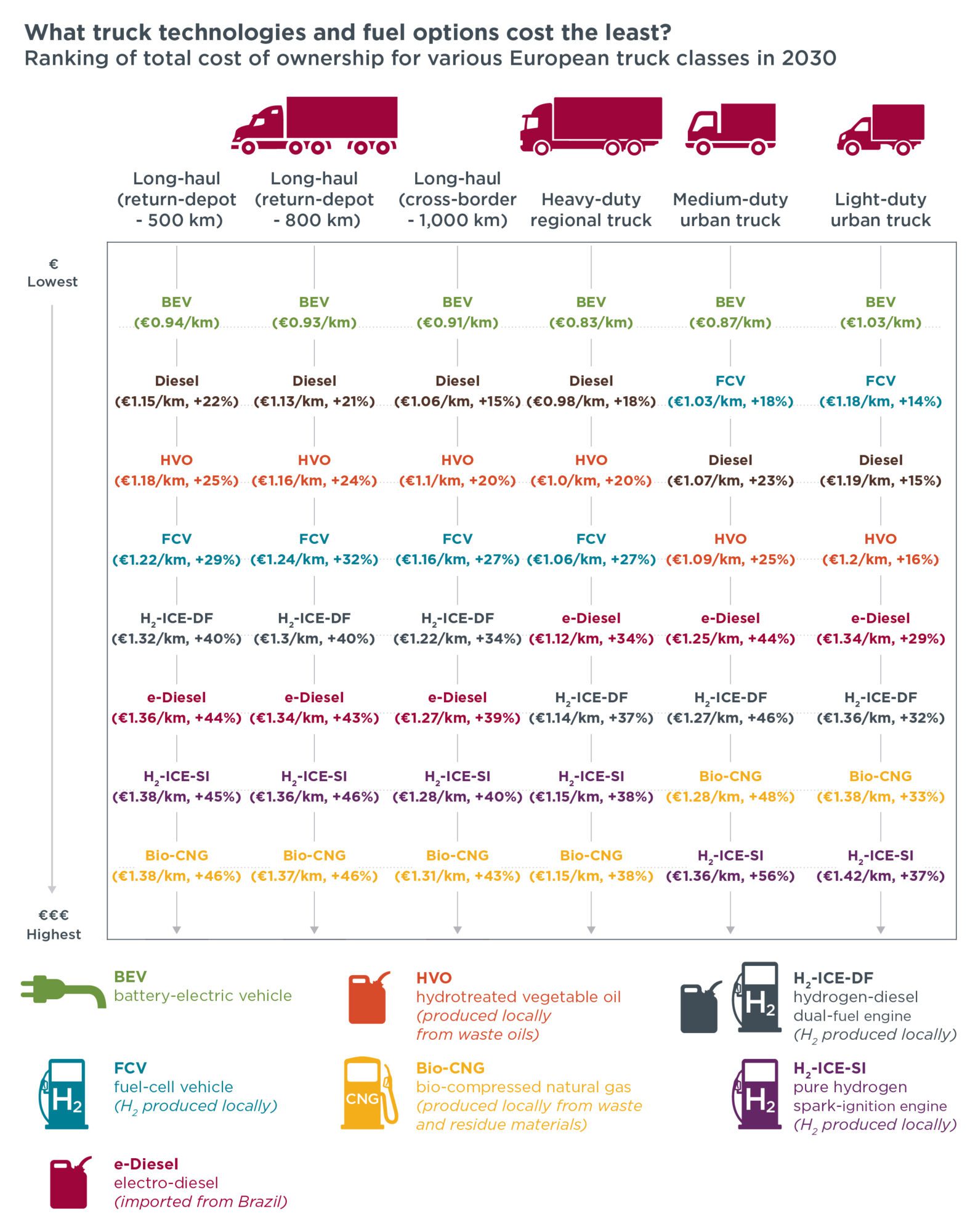Note: After attention to this paper, the appendix was added on December 12, 2023.
Heavy duty vehicles (HDV) are among the largest sources of CO2 emissions in Europe, primarily due to the sector’s reliance on diesel vehicles. While many alternative technologies and fuel options exist to mitigate these emissions, the development of markets for them will depend primarily on their economic performance. This study compares the total cost of ownership (TCO) of different European truck classes and technologies compared to diesel. Total cost of ownership includes truck purchase costs, European average fuel prices, maintenance, European average road tolls, taxes and duties.
The analysis covers the most common truck types in the region, from long-distance vehicles to city delivery vehicles. It looks at seven paths to decarbonizing trucks for combustion technologies or electric powertrains with different fuel options (see figure below).

Figure 1. Heavy vehicle categories and decarbonization pathways based on powertrain technologies and fuel choices.
The main findings of the study indicate the following:
Battery electric trucks are expected to be the lowest-cost path to decarbonization for most truck categories before 2030. Their lower operating expenses compared to diesel offset their higher initial cost. Fuel cell trucks powered by green hydrogen are expected to become cost-competitive with diesel trucks by 2035. Trucks equipped with a conventional combustion engine powered by alternative low-GHG fuels such as hydrotreated vegetable oil (HVO), e-diesel , and biodiesel-compressed natural gas (bio-CNG) will face challenges in matching the economic performance of diesel trucks. By 2030, total cost of ownership is expected to be 15% to 45% higher than their zero-emission counterparts. Trucks using hydrogen internal combustion engines may not match the economic performance of their zero-emission or diesel counterparts. However, in the long term it is expected to record a better total cost of ownership than conventional e-diesel and CNG trucks.
A summary of the study can be accessed here.





